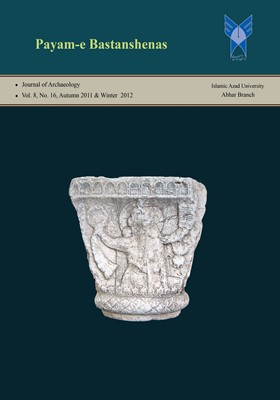Writing and Language in Ninth and Eighth Centuries BC in Gilan
Subject Areas : Historical Archaeology
1 - Research Center for Linguistic, Inscriptions & Texts (ICHHTO), Tehran, Iran.
Keywords: Urartian, Cuneiform Inscriptions, ancient Languages, Assyrian, Medes, Ancient Northern & Northwestern Iranian Tribes,
Abstract :
This article has reviewed after years the previous readings of those two cylinders containing new Assyrian cuneiform inscriptions, unearthed in archaeological excavations in 1340-41by E. O. Negahban in Tepe-Marlik in Northern Province of Iran, Gilan. The both inscriptions already read by G.Cameron and I. J. Gelb, have been revised by the author, and a new reading has been suggested for the one having more words. Of course, this revision happened after the unearth of the metal Urartian bracelet in Tool-e Talesh, Malayan excavation, in1380 ,by M. R. Khalatbari and reading its Urartian inscription that, the auther decided to write this article by the up mentioned title, with regards to the extant unearthed inscribed artifacts in Gilan, belonging to the C8 and C9 BC , and also to nearly all other inscribed artifacts, relating to the mentioned period of time, including two other Urartian inscribed pieces of metal horse laces. Beside these archaeological inscribed documents, namely: Two Assyrian cuneiform inscriptions of Marlik cylinders,one urartian cuneiform inscription of Tool-e Talesh metal bracelet, and the other two Urartian inscribed pieces, the author has bored in mind the historical literature about the Indo-Iranian immigration in the early centuries of the 1st Millennium BC into Iran, and their settlements in the north and northwest of Iran, by the name of Caspies, Kadusies, Gils, Gutians, Lulubians and etc., who later, they stablished the small local kingdoms like Andiu, Manna, Parsua, Zamua , Gilzan, which at last their unions led to the foundation of Medes great government. The author at the end of article has come to this conclusion that, since from the Medians, despite their powerful empire, not a single inscription has ever been found, therefore most probably, because of lacking of writing, they also, like their united, above mentioned small kingdoms, have used the neighboring lingo-franca Aramaic or other cuneiform writings, like Assyrian or Urartian. This is what, the mentioned inscribed artifacts, based on the extant documents, which tell us how the peoples in north and northwest of Iran ,who later founded the Medes Empire, in 8th and 9th centuries B.C. were also deprived of any indigenous, and independent, writing system.
_||_


